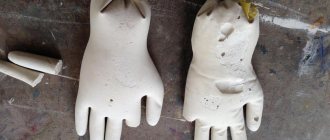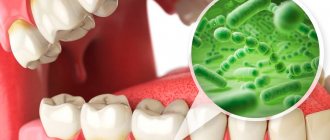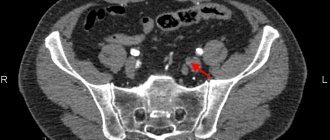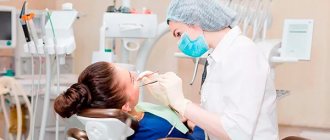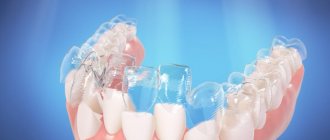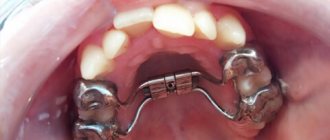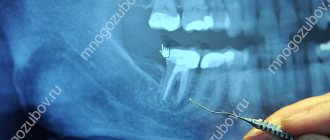Treatment, correction, prosthetics in dentistry and preventive procedures are expensive. People strive to keep their teeth in perfect condition and pay a lot of attention to their health. Therefore, a dental office or your own clinic is a profitable business with a constant source of income.
The provision of medical services must be formalized in accordance with all rules. Before opening a dentistry, you need to prepare for the time spent collecting permits and documentation and the financial costs of purchasing equipment and renting premises. It is necessary to start a business in this area by drawing up a dentistry business plan. It reflects all aspects of the upcoming activity, the amount of start-up capital, expected profit and payback period.
A ready-made, professional, well-calculated dentistry business plan, with current analytical and financial indicators, can be downloaded here and adjusted to suit you.
Dentistry from scratch - step-by-step business plan
First, you need to think through the idea and main concept of the new business, and have a clear idea of the services provided in the office or medical center. The wider the range of dental work, the more specialists need to be hired and the more spacious the premises should be.
Step-by-step instructions for drawing up a dental business plan:
- Analysis of the market niche in the selected city/region. Research of supply and demand, monitoring the activities of competitors to identify their weak and strong points.
- Organizing a business from scratch or purchasing a ready-made business. State registration of an enterprise, obtaining a license and permits, choosing a form of ownership and taxation system.
- Determination of the number of medical personnel. In addition to dental specialists, employees are required to perform auxiliary functions - administrator, accountant, cleaner.
- Search for premises taking into account the format of dentistry - office, clinic, large medical center. The location must be chosen so that it is convenient to get to the dentistry from different parts of the city.
- Drawing up a list of services that may have a narrowly focused and complex specificity - therapy, orthodontics, prosthetics, aesthetic dental correction, implantation, caries prevention, etc.
- Purchase of medical equipment, furniture, consumables - the list depends on the range of services provided.
- Search for personnel that meet the requirements of specific dentistry. It is ideal if you can attract a doctor with an already established professional reputation.
- Promotion of a new brand. An advertising campaign must include all available marketing tools so that a large number of potential clients learn about dentistry.
- Calculation of start-up costs, profit planning and analysis of probable risks.
A well-written business plan is the first step towards opening a profitable enterprise. Dental services are in demand constantly and everywhere, which, if properly organized, helps to generate a stable income.
Attention! A business plan is an idea supported by real calculations of costs and financial indicators. Without calculating investments and payback periods, the document is of no practical use.
Market and competitor analysis
A ready-made, professional, well-calculated dentistry business plan, with current analytical and financial indicators, can be downloaded here and adjusted to suit you.
Like any business, opening a dentistry begins with an analysis of the market in which the entrepreneur plans to provide services. The industry is highly competitive, since the number of public medical institutions in a city or region averages 4-10% of the total number of dentists.
The rest of the market niche is occupied by paid commercial organizations. Therefore, the business plan for a dental office needs to reflect not only the presence of good business potential, but also the high level of competition.
According to the Ministry of Health of the Russian Federation, the market share of dental services will grow annually by 12%. Most often, the population visits dental surgeons, therapists, orthodontists and pediatric specialists, and the demand for prosthetics and aesthetic correction is increasing.
Before opening a dentistry from scratch, you need to understand that the greatest risks for the new organization are borne not so much by competitors as by the state. Medical institutions are subject to strict requirements - availability of a license, suitability of the premises, quality of services, certification of equipment for the X-ray room.
On a note! After collecting data and analyzing the market (demand, supply, competitors), it is possible, in theory, to “lay in” the payback of the economic dentistry project at the level of 6-12 months.
Ventilation of dental x-ray room
Ventilation of the dental X-ray room can be achieved through a supply and exhaust ventilation system, window fans, and also through air conditioners.
Ventilation of a dental X-ray room in an already constructed building, in accordance with the requirements of the relevant regulatory documents, can be general (non-autonomous) supply and exhaust. However, if the X-ray room is planned to be located in a newly constructed building, then the ventilation system must already be autonomous.
The ventilation system of dental clinics, like all healthcare institutions, must be under constant control (SNiP specifies a schedule for preventive repair work). If the ventilation system breaks down, it must be repaired immediately.
The need to be a dentist
Medical education is needed for those entrepreneurs who plan to independently provide dental services in their office or clinic. If a businessman will deal with commercial, financial, organizational issues, it is not necessary to have a medical degree and be a practicing dentist. It is necessary to involve professional dentists in the work. Each doctor has a narrow specialization, and one dentist can provide all services.
For an office with 1-2 chairs, you need to choose one of the directions:
- therapy;
- surgery;
- prosthetics;
- correction;
- implantation;
- children's doctor.
If there are several offices in dentistry, the list of services provided can be significantly expanded. The businessman himself only needs a specialized education (economic, financial).
Air supply indoors
The air coming from outside must be supplied to the upper zone of the internal air space of the premises.
In operating rooms, anesthesia rooms, X-ray and treatment rooms, air is removed:
- from the area located 40 cm from the ceiling surface - 40%;
- from an area located 60 cm from the floor surface - 60%
All premises of the dental clinic are provided with the possibility of natural ventilation through open windows or vents, regardless of the presence or absence of a supply and exhaust ventilation system.
Choosing an enterprise format
To decide on the format of dentistry, you need to clearly understand the tasks and goals of the project. The size of the initial investment, the search for suitable premises and the hiring of personnel depend on this.
Cabinet
Mini-dentistry providing one type of service. They install 1 chair in the office, enter into contracts with one or two doctors, so that specialists see patients at different times of the day and days of the week, and at the same time they themselves have days off. At the project launch stage, capital investments are small, the flow of clients is limited - 10-12 patients per day.
Clinic
Larger scale organization. The clinic can provide services to adults and children. The range of specialists is wider - surgeons, orthodontists, dental technicians, prosthetists, etc. Several offices serve more than 20 clients per day. Opening a clinic requires significant funds for the arrangement of premises and the purchase of equipment.
Center
A full-fledged dental facility with a wide range of services. Workplaces for staff include not only patient chairs, but also separate rooms for X-rays, diagnostics, implantation, treatment, and rooms for sterilizing instruments. The flow of clients is large - 30-40 people per day. Investments of several million rubles are required, depending on the size of the center.
Table 1. Classification of dentistry by price level
| Class/features | Economy | Average | Premium |
| Format | Cabinet | Clinic | Clinic, center |
| Staff | 1-2 specialists | 5-10 doctors | From 10 dentists |
| Services | One or two directions | Several types of services | Full range of services |
| Average bill | 150-300$ | 1000$ | From $1500 |
The price level of dentistry depends on the client’s profile. Some clinics accept patients with a budget cost per session, while other dentistries are designed for VIP visitors.
Type of dental clinic ventilation system
Most often, in dental offices it is necessary to use an exhaust ventilation system (provides removal of exhaust air), which works in conjunction with a supply ventilation system (responsible for supplying clean air). Ventilation through ventilation is allowed in a number of rooms. The supply ventilation system is a set of cleaning filters, a blower fan, a heater (heater), connecting communications (air ducts), noise mufflers, etc.
The principle of operation of the supply ventilation system
Air taken from the street, passing through the filter, is cleaned of various harmful impurities and odors. Then it enters the heater, where, if necessary, it is heated to the required temperature (a sensor is installed in front of the heater to control the temperature of the air coming from the street). Fresh, already purified air is supplied to the room using a blower fan. A silencer is usually installed after the fan in this system.
Air intake/exhaust requirements
In this case, outside air is taken from a clean zone located at a distance from the ground of at least 2 meters. The supply of clean air is carried out in the upper zone of the room, and the exhaust air (with some exceptions) is taken from there.
*IMPORTANT! In anesthesia, operating rooms and X-ray rooms, exhaust air must be taken from both the upper and lower parts of the room.
Exhaust air is discharged 70 cm above the roof. Ventilation of dental offices that are not equipped with an autonomous ventilation system can be carried out by removing “dirty” air to the outer wall of the building.
Filters
To avoid pollution of the surrounding air with harmful substances, the presence of high-efficiency cleaning filters is a prerequisite. Photocatalytic filters and HEPA filters are mainly used.
HEPA filters provide highly effective particle retention. The effectiveness of HEPA filters is measured by the number of particles up to 0.06 microns in size per liter of air that are released back into the environment after passing through the filter (indicated in parentheses). Filter classes: HEPA 10 (50000), HEPA 11 (5000), HEPA 12 (500), HEPA 13 (50), HEPA 14 (5). (more about cleanroom ventilation)
The main advantage of photocatalytic filters is that they do not accumulate harmful substances. Under the influence of an ultraviolet lamp and a catalyst (titanium dioxide), harmful impurities contained in the exhaust air undergo chemical transformations and decompose.
Equipment placement
Separate rooms without permanent occupancy should be allocated for the ventilation system equipment.
An autonomous air ventilation system must have:
- operating rooms;
- preoperative;
- sterilization rooms;
- X-ray rooms;
- bathrooms;
- production premises of laboratories.
Each office (with the exception of the operating room) must have the possibility of natural ventilation - ventilation through transoms. If this is not possible, then it is necessary to install air conditioners in the room, equipped with filters for air treatment and purification. Fine filters must be replaced at least once every six months.
It is also necessary to provide:
- exhaust hoods over heating devices in the polymerization room;
- forced exhaust for therapeutic, soldering, sterilization, orthopedic rooms;
- local suction equipment near each polishing machine.
*IMPORTANT! When designing premises for dental clinics, it should also be taken into account that the ventilation of dentistry located in part of a residential or administrative building must have independent air ducts and cannot be connected to the ventilation system of the residential area.
Preparation of documentation and obtaining permits
The scale and functionality of the clinic, the type of building in which it will be located, and the features of the services affect the list of required documents. The company must be registered as an individual entrepreneur or LLC when hiring a staff of specialists. In the first case, the license is issued to the doctor, in the second - to the owner of the institution for all personnel.
To open a dental clinic, you need the following documents:
- registration certificate, TIN;
- permission from Rospotrebnadzor;
- medical license (Roszdravnadzor);
- X-ray room license;
- registration in the Pension Fund, Social Insurance Fund, Compulsory Medical Insurance Fund;
- registration with the Federal Tax Service;
- checking account;
- stamp design;
- agreement of purchase and sale or lease of premises;
- registration of cash register equipment;
- permission from SES and fire inspection;
- contracts for water supply, sanitation, electricity, communications, security systems, removal of medical waste, disinfection;
- employment contracts with employees.
When submitting an application for registration of an enterprise, you must indicate OKVED codes - 85.12, 85.13 and select a simplified taxation system. It is necessary to set up a Consumer Corner in the clinic and create a ledger for recording income and expenses.
On a note! The list of documents may vary depending on the format of the enterprise. The average cost of certificates and permits is 60,000 rubles, including the state fee for obtaining a new medical license in the amount of 7,500 rubles.
Features of ventilation in dentistry
As mentioned above, ventilation systems for dental offices affect obtaining a license to provide medical services. At the same time, the ventilation itself undergoes a certification procedure.
This procedure is carried out after the installation of the system is completed. The ventilation system passport is updated annually and is valid for only one year.
To obtain a new passport for the next year, the following work must be completed:
- System disinfection.
- Cleaning filters.
- Checking work efficiency.
- Eliminate all identified problems.
The procedure for ventilation certification can be simplified by concluding a service agreement with the company that carried out the work.
When carrying out routine maintenance to check the supply and exhaust ventilation system, it is prohibited to carry out any medical work. The dental office must be prepared for inspection, the equipment must be covered with special covers. After cleaning and working with devices, it is necessary to disinfect the room
Another feature of dental ventilation systems is the need to heat the air supplied to the room. This measure is extremely necessary in places with harsh climates and is provided by special devices built into the ventilation system.
In places with warmer climates, additional heating of the air supplied to the room is not required. For places with hot climates, it is possible to integrate duct coolers into ventilation systems.
The ventilation grille should be located in the upper zone of the room. In dental offices equipped with X-rays, it is advisable to opt for supply and exhaust ventilation.
Cleaning of ventilation grilles should be carried out daily while tidying the room. Detection of a large amount of dust during cleaning may indicate premature clogging of the ventilation system. Also, daily inspection of the grille will prevent the appearance of mold if the humidity in the room increases.
To accommodate the equipment involved in the ventilation system, it is necessary to allocate utility rooms, access to which should be limited, and their placement should not be adjacent to the room where dental medical work is carried out.
All ventilation ducts must be located under the ceiling in corridors and work areas. They must be hidden, that is, covered with a suspended ceiling.
Selecting a room
If dentistry is located in a residential building, permission from the management company and residents (if necessary) is required. In the case of the construction of a new building or redevelopment of premises, it is necessary to coordinate the project with the Housing Inspectorate, Fire Supervision, Sanitary and Epidemiological Station, Department of Health, BTI, Urban Architecture Service and other authorities. A complete list of requirements for premises for a dental office is given in SanPiN 2.1.3.2630-10 and 2956a-83. Basic Rules:
- area of at least 30 m2 - a room with a chair, equipment (from 14 m2, a hall (from 10 m2) and a sanitary and hygienic area (from 5 m2);
- if there are 3 dental units, a separate room for sterilization is needed (from 6 m2);
- the area for the X-ray room is at least 11 m2 and the developing room - from 6 m2;
- A room of 15 m2 is allocated for the offices of a pediatric dentist, orthopedist, implantation specialist or orthodontist.
In dentistry, it is necessary to provide additional rooms for administration, employees, and storage. If you plan to open an X-ray room, you need to coordinate the project with the X-ray department in the region.
Attention! When choosing the location of your office, you need to focus on areas with high foot traffic and good transport accessibility.
Dental ventilation. Where to save and where to overpay?
If you are opening a full-fledged dentistry, and not a dental office, 40% of the premises will require supply and exhaust ventilation. Namely: surgeons' offices, X-ray rooms, MRI rooms, sterilization rooms and bathrooms.
1. Overpay 50,000 rubles: there is no point in doing ventilation in 3 rooms, if for the same money you can create a comfortable microclimate in the entire clinic.
The main cost of ventilation (60%) is equipment. The cost of the air handling unit, of course, depends on the area of the premises. But within modest dental areas (up to 200 m2) this dependence does not exist.
You can connect to the air supply unit not the 3 rooms required by SanPiN, but all the rooms of the clinic. Thus, ensuring high-quality air exchange throughout the dentistry and the comfort of visitors.
A supply and exhaust unit for 3 required rooms will cost RUB 50,000 more. cheaper than installation for the entire clinic, so there is no point in saving on this.
If you do not listen to this advice, you will not be able to save 300,000 rubles. in points 3 and 4.
2. Save 105,000 rubles: we will throw the dirty air into the mine, and not into the street.
To throw dirty air from the hoods outside, it will have to be purified. This is strictly monitored by the SES and a photocatalytic filter will need to be installed.
You will save money if the management company finds exhaust shafts to which we can connect a ventilation system. (Clause 6.6 SanPiN 2630-10 ).
3. Save 250,000 rubles: influx into the X-ray room comes from the general ventilation system.
Most project .
This means that you will overpay 140,000 rubles. for the air handling unit, RUB 30,000. for materials and 80,000 rubles. for installation, connection and commissioning.
In fact, SanPiN 2.6.1.1192–03 says nothing about this. The SES check does not require this either.
In the X-ray room we must make an independent exhaust system, but the supply system can be shared, BUT with the mandatory installation of check valves.
4. Save: heat removal from the server and compressor.
Dentistry pays a lot of attention to SES requirements, but often forgets about the safety of expensive equipment - a server and a medical compressor.
If the clinic has more than 5 rooms, a room is usually allocated for installing server and compressor racks. The equipment heats up, so the easiest solution is to install an air conditioner. Few people understand that the air conditioner in the compressor room must work not only in summer, but also in winter. This means that the outdoor unit must be purchased with a winter kit, which increases the cost of the entire system by 25%.
In practice, a medical compressor and server are not so powerful that it is worth installing an air conditioner for them. You can simply install an exhaust grille in the ceiling of the server room and this will be enough to remove heat.
Purchase of equipment
The list of dental units, medical instruments and equipment is determined based on the services provided.
Table 2. Standard set of equipment for a clinic with 3 chairs
| No. | Name | Price per piece, rubles |
| 1 | Dental unit (chair) | 300000 x 3 = 900000 |
| 2 | Set of replacement tips | 3000 (monthly) |
| 3 | Tools | 30000 |
| 5 | Curing lamps | 10000 |
| 6 | Autoclave for instrument processing | 60000 |
| 7 | Sterilization equipment | 30000 |
| 8 | Cabinets for storing materials and tools | 70000 |
| 9 | Furniture for clients and staff | 60000 |
| 10 | Analogue of an X-ray machine | 250000 |
| 11 | Consumables | 5000 (monthly) |
| 12 | Total | 1418000 |
To this list should be added the costs of purchasing office supplies, digital equipment, air conditioners, humidifiers and, if necessary, purchasing a full-fledged X-ray machine costing from 1.5 million rubles.
Hiring staff
The number of employees varies greatly and depends on the size of the dentistry.
If you make a calculation from a clinic for 3 chairs, you need to hire:
- three dentists - total salary 120,000 rubles;
- three nurses - total salary 90,000 rubles;
- two administrators - total salary 60,000 rubles.
You can hire an accountant part-time or do the accounting yourself. On average, monthly expenses for paying employees will be 280,000 rubles. But the figure may be higher if there are well-known dentists on staff and are paid as a percentage of revenue.
Nurses must have a diploma of secondary medical education and a certificate in the specialization “Preventive Dentistry”. Strict requirements are imposed on the doctor, since his qualifications and experience determine the quality of the services provided. It is necessary to have a diploma of completion of internship and residency, a certificate in the dental field and at least 5 years of work experience.
Important! With good “promotion” of dentistry, income from one chair in the capital region brings in an average of $20,000 per month (1.5 million rubles). This figure can be used as a guide when calculating financial indicators.
Advertising campaign
In order for potential clients to learn about new dentistry more quickly, you should use different tools for advertising:
- printed materials – business cards, leaflets, flyers;
- Internet promotion – website, social networks;
- mailing in electronic and real format;
- spectacular outdoor advertising (signs, stands);
- grand opening with discounts for first customers.
You can hire specialists to promote your company on the Internet. The services are expensive, but quickly give the expected effect. Average advertising costs are 60,000 rubles, plus monthly marketing investments from 5,000 rubles.
